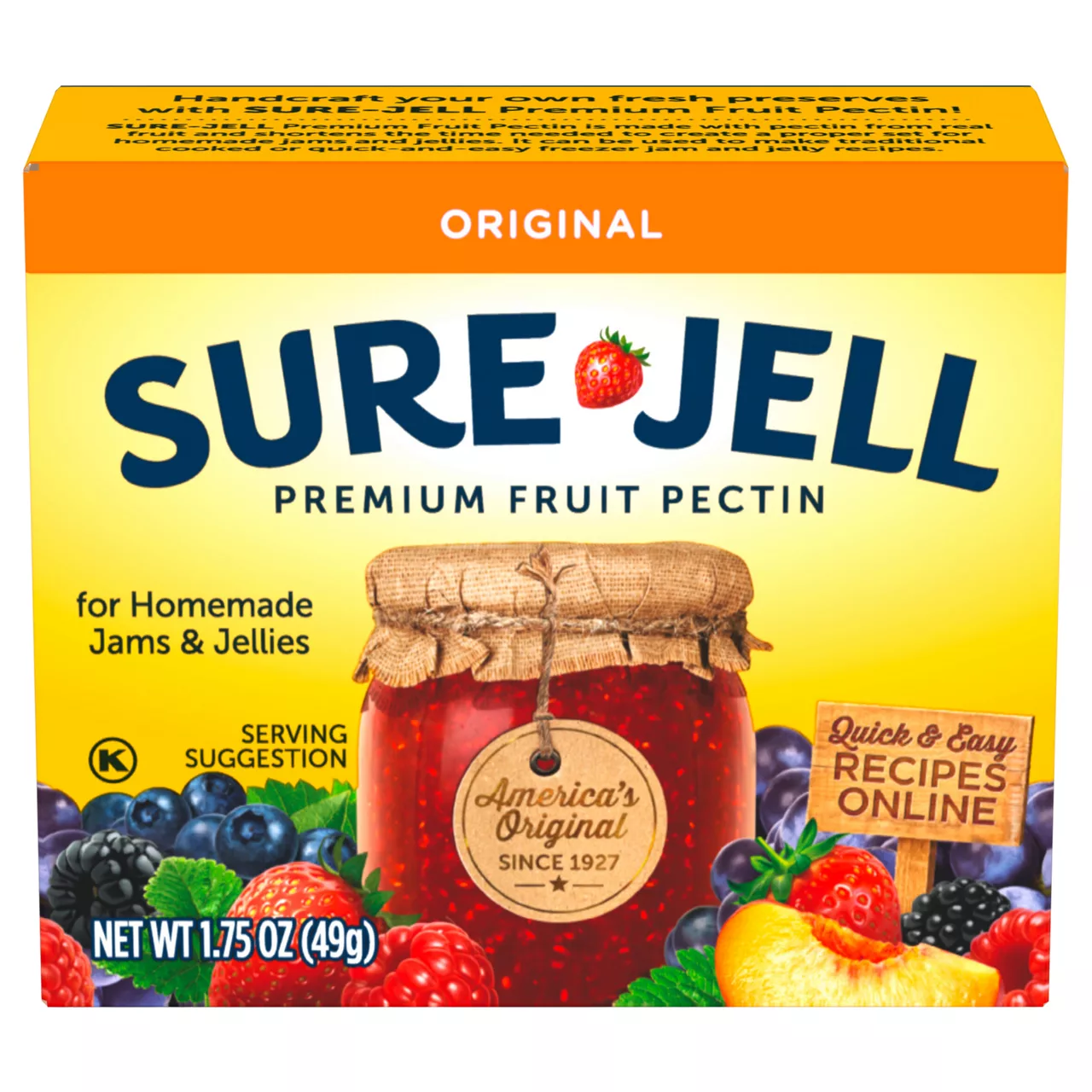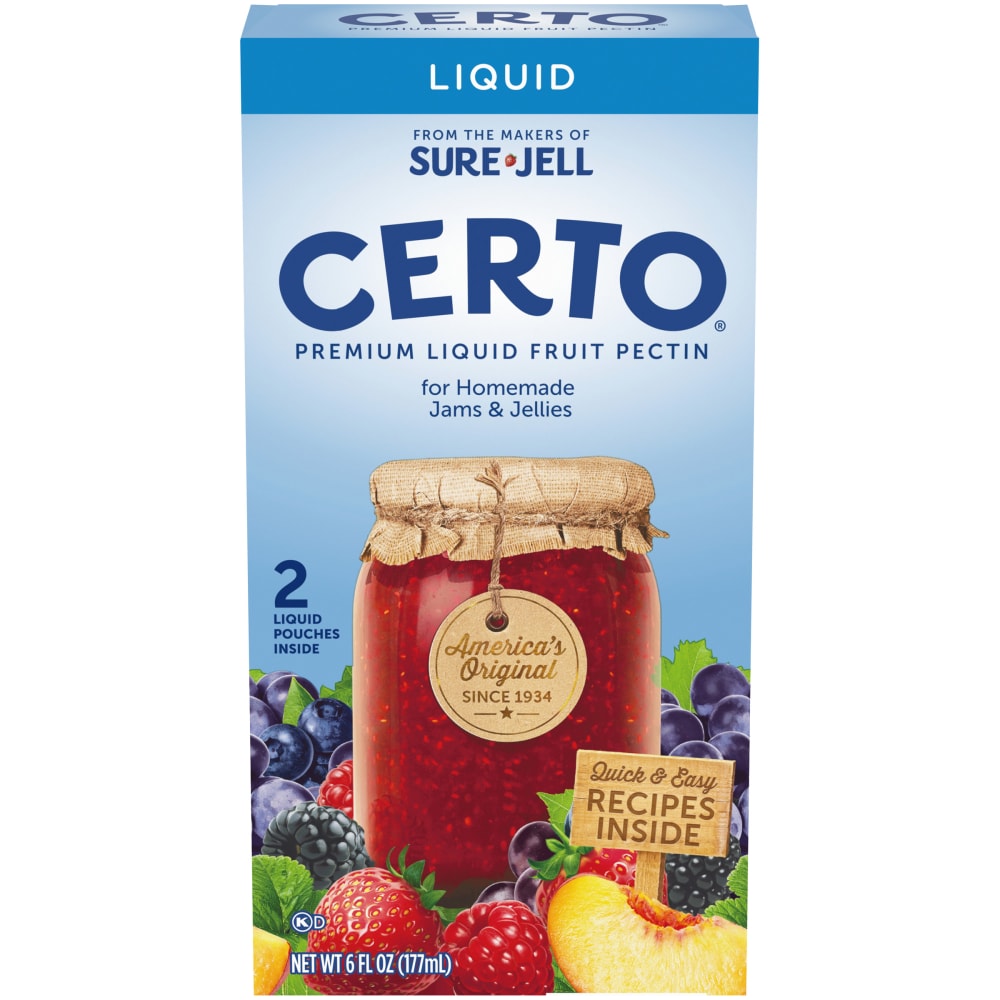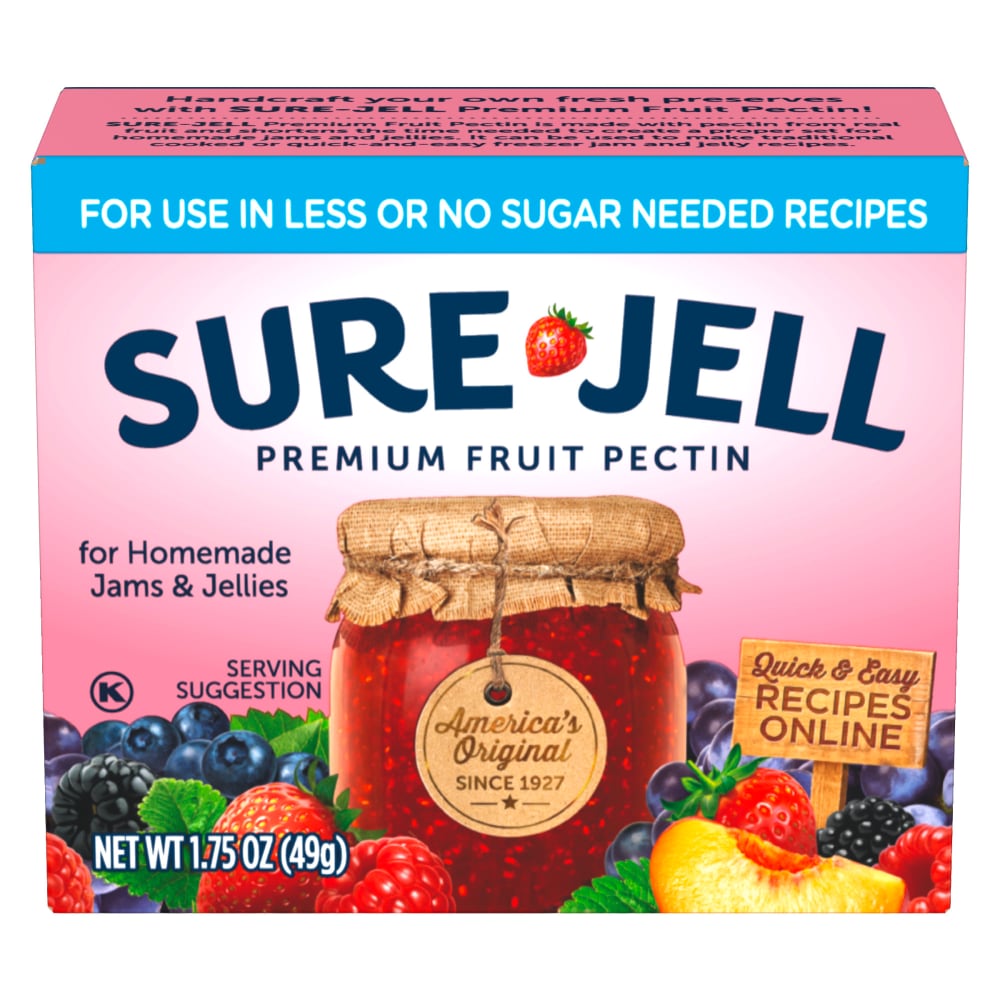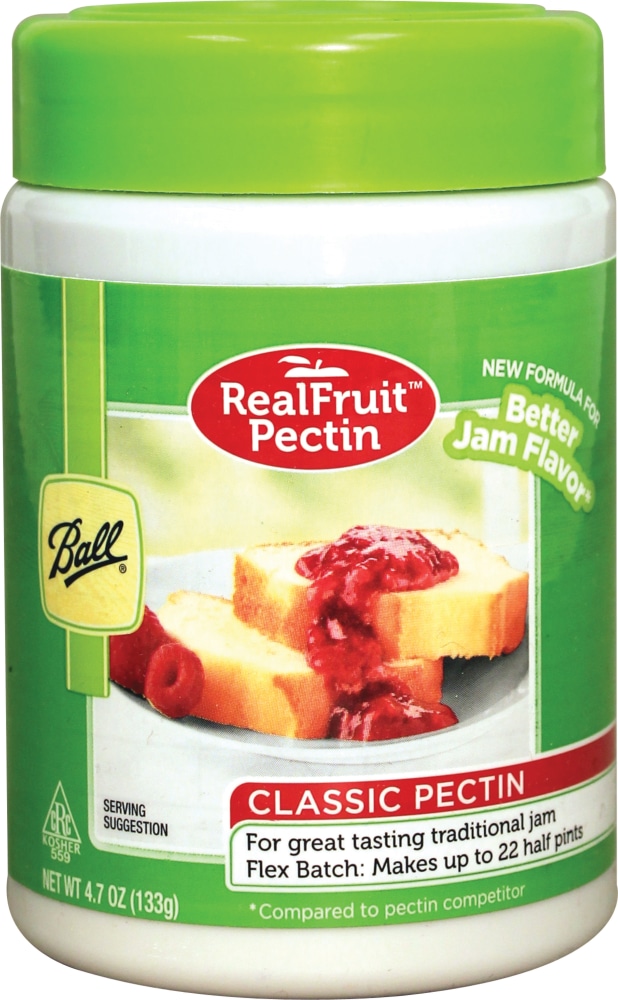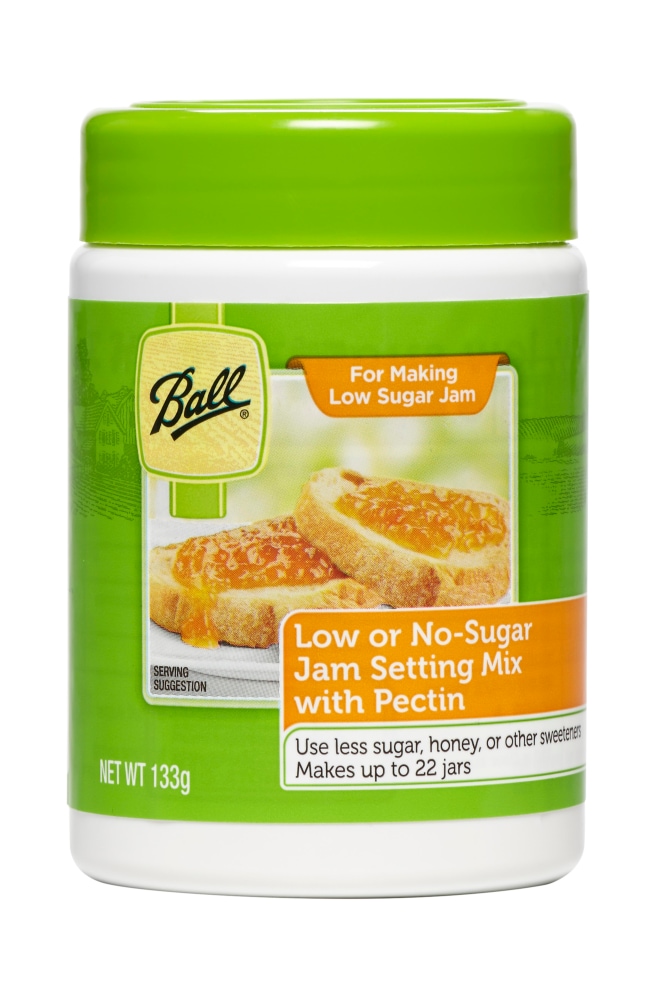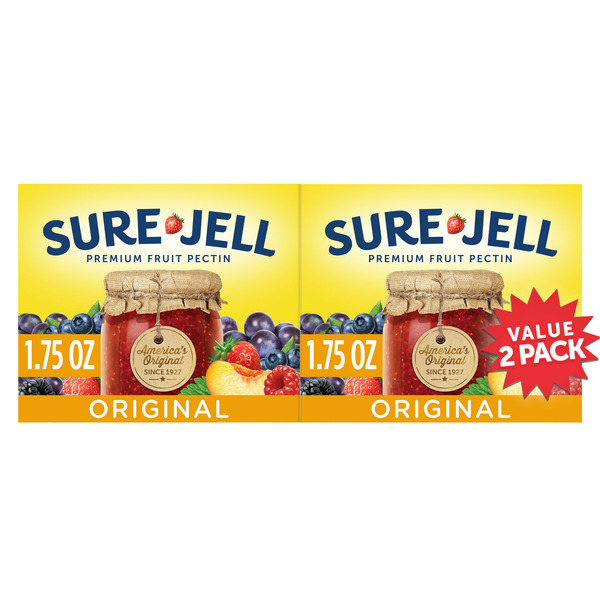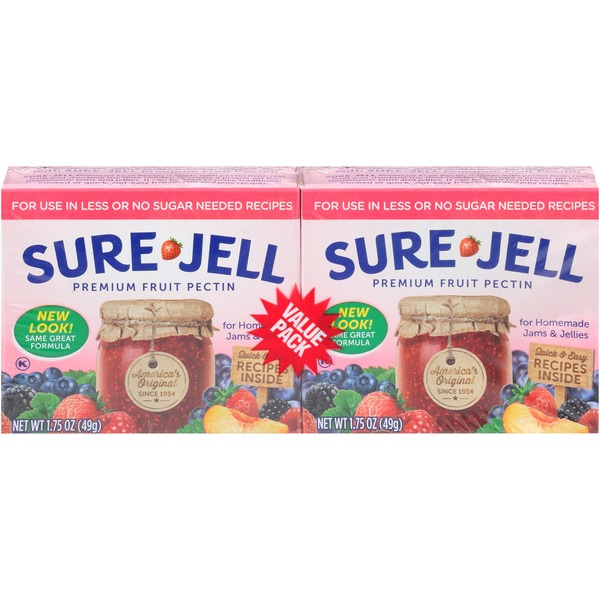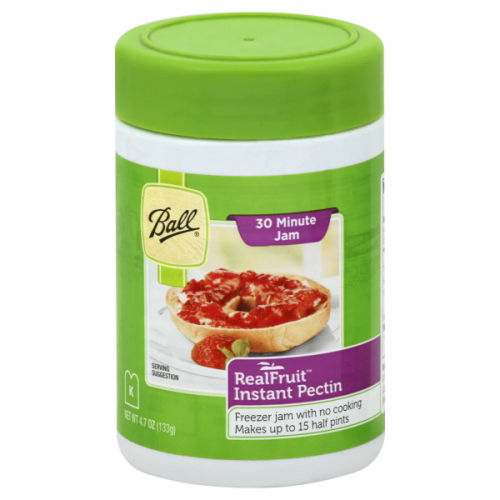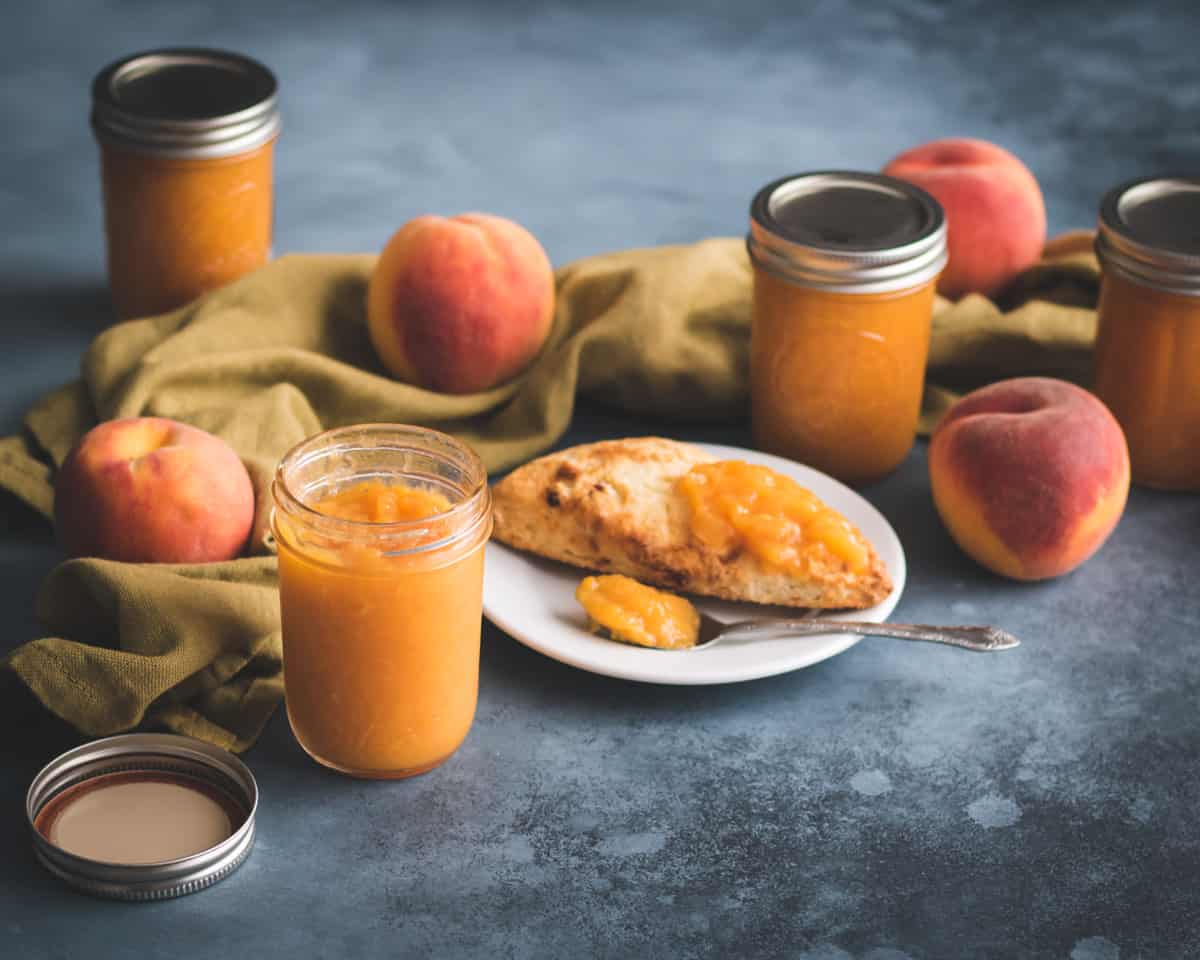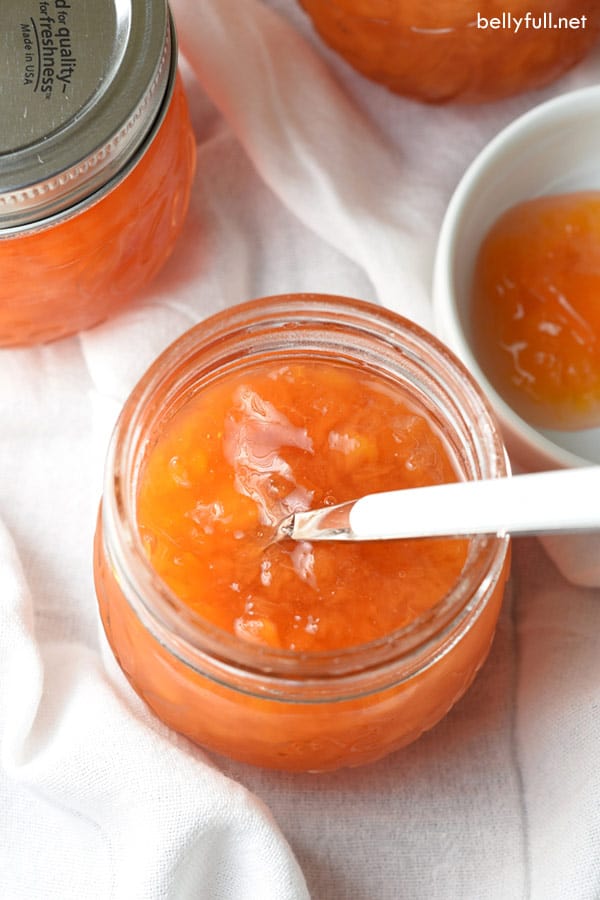CONDIMENTS AND SAUCES
Pectin
Pectin is a naturally occurring polysaccharide found in the cell walls of various fruits and plants, primarily used as a gelling and thickening agent in cooking. This water-soluble fiber originates from the cell walls of plants, with the highest concentrations found in the skins and cores of fruits such as apples, quinces, and citrus fruits. Pectin plays a significant role in food preservation and is a key ingredient in making jams, jellies, and marmalades.
In home cooking, pectin is widely used to give a firm, gel-like structure to various sweet and savory recipes. It is particularly beneficial for individuals following a vegan or vegetarian diet, as it acts as a suitable alternative to gelatin, which is derived from animal sources. Additionally, pectin's gelling properties can also help in improving the texture of low-sugar or sugar-free desserts and baked goods.
99%
CARBS
0%
FAT
0%
PROTEIN
134 Pectin Products
Sure-Jell Fruit Pectin, Premium, Original
Certo Premium Liquid Fruit Pectin
Sure-Jell Premium Fruit Pectin for Less or No Sugar Needed Recipes
Realfruit Classic Pectin
Ball® Low or No Sugar Jam Setting Mix with Pectin
Sure-Jell Original Premium Fruit Pectin for Homemade Jams & Jellies Value Pack, 2 ct Pack
Sure-Jell Premium Fruit Pectin for Less or No Sugar Needed Recipes Value Pack
Sure-Jell Original Premium Fruit Pectin for Homemade Jams & Jellies Value Pack, 6 ct Box, 1.75 oz Packs
Ball Pectin, Instant
Sure Jell Certo Premium Liquid Fruit Pectin
Used In 5 Recipes
Pectin Is Frequently Used With
Pectin FAQ
pectin is a type of fiber that is used in cooking mainly for its thickening and gelling properties. It's found in high amounts in certain fruits such as apples and citrus fruits. Cooking with pectin usually involves using it to create a gel-like structure for recipes like jams, jellies, and marmalades. It's also a popular plant-based alternative to gelatin, which is derived from animals. It can be added to low-sugar or sugar-free desserts and baked goods to improve their texture. However, there can be common misunderstandings about using pectin. For example, it is important to differentiate between different types of pectin like low and high methoxyl pectins which have different gelling behaviours (high-methoxyl requires sugar and low-methoxyl doesn't). Also, adding too much pectin can result in overly stiff or grainy texture in the final product.
What is the purpose of pectin in cooking?
Can you use too much pectin?
Can you substitute gelatin for pectin?
Can I make my own pectin?
Is pectin natural or synthetic?
What are the different types of pectin?
Do all fruits contain pectin?
Can I use pectin in low-sugar or sugar-free recipes?
When should I add pectin when making jam?
Can I use pectin in savory dishes?
Expiration & Storage Tips
When does pectin expire?
In a dry, unopened package, pectin can typically last for about 1-2 years, but it's always good to check the manufacturer's 'best by' date for the most accurate information. Once opened, pectin should remain fresh for up to 6 months when stored properly. In a homemade scenario, if you've used pectin in a recipe like jams or jellies, your homemade product's shelf life will depend on other ingredients used as well. Most homemade jams or jellies can be safely stored for 1-2 years in a dark, cool, and dry environment.
How do you tell if pectin is bad?
Pectin itself won't harm you if it's past its best-by date. However, if you find that it's no longer helping your recipes gel as effectively, this is a good indication that it's lost its thickening power and should be replaced. Also, if the pectin develops an off smell or changes color, consider discarding it.
Tips for storing pectin to extend shelf life
• Keep pectin in a cool, dark, and dry pantry. Ensure the storage container is sealed tightly after use.
• Storing pectin in the fridge or freezer isn't recommended as it can degrade the thickening power of the pectin.
• As moisture can cause pectin to clump, always use dry utensils when handling.
• Don't let pectin come into contact with metal for extended periods - this can reduce its effectiveness. So opt for glass, plastic or ceramic storage containers.
EXPIRES WITHIN
5 - 7
MONTHS
Substitutes

Cassava Flour

Tapioca Flour

Instant Tapioca

Cornstarch

Arrowroot Powder

Unflavored Gelatin

Agar

Xanthan Gum

Guar Gum

Chia Seeds
See All
Health Info
Macros
45g
CARBS
0g
FAT
0g
PROTEIN
Allowed on these diets
LOW FAT
HIGH CALCIUM
VEGETARIAN
KETO
PALEO
WHOLE 30
MEDITERRANEAN
LOW CARB
VEGAN
LACTOSE FREE
GLUTEN FREE

